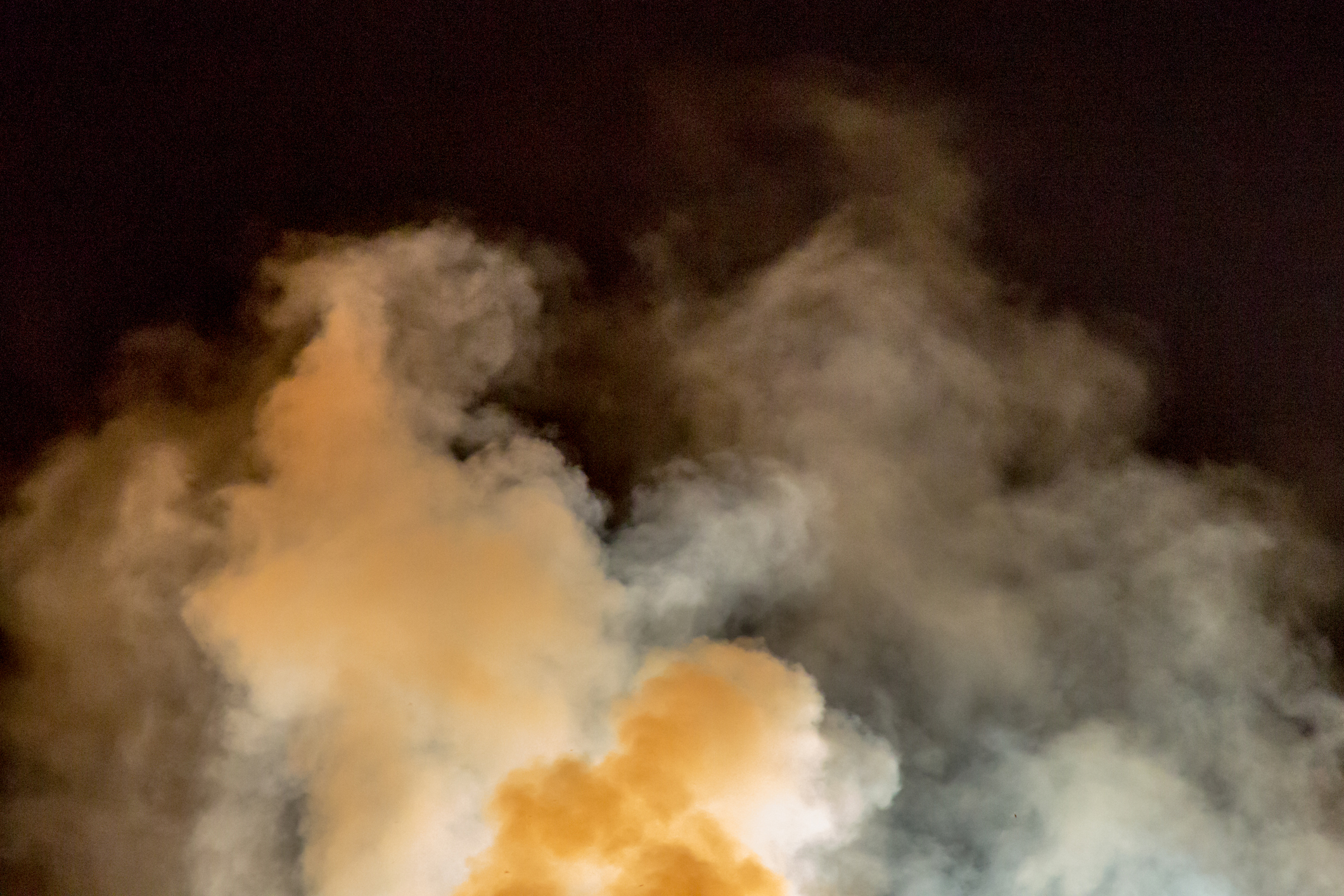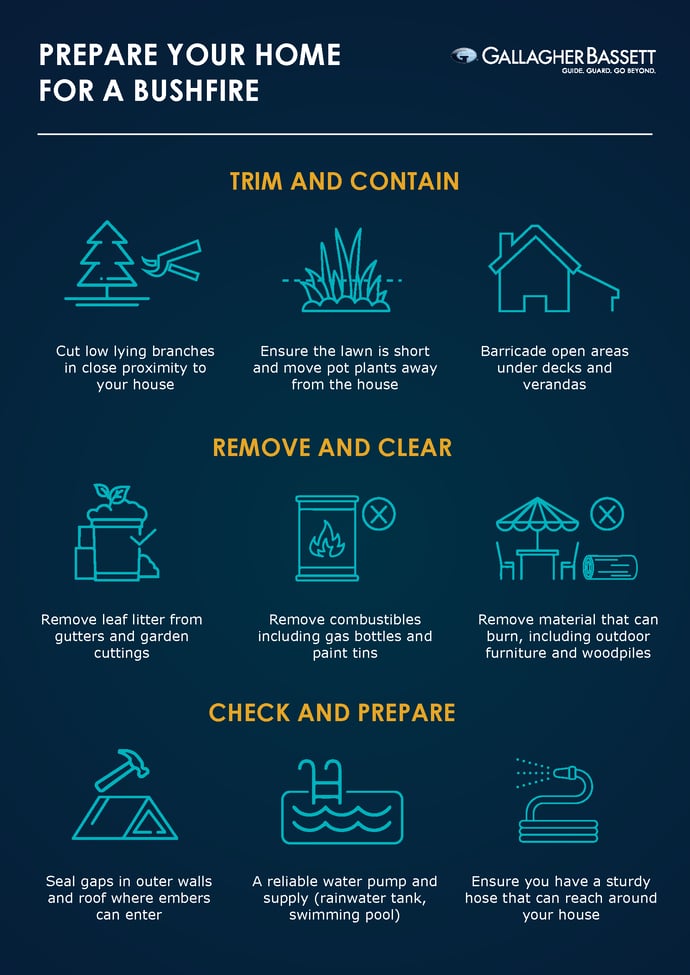Prepare for Bushfire Season

Preparation is essential to keep your home and family safe during bushfire season. Get your house and property prepared for bushfire season by using our simple checklists and tips.
Start with your Garden
To protect your property during bushfire season, you should avoid having plants in close proximity to your house and reduce vegetation to ensure that there’s a gap between your home, garages or sheds, and trees, twigs or shrubs.
It is recommended that trees are cut back with adequate space between them and your property is clear of leaves, twigs and grass cuttings.
You may like to consider installing an earth barrier, fence or stone wall around the house to act as a heat shield if you live in a bushfire-prone area.
Bushfire Preparation Checklist
- Cover up areas under floors, decks, gaps under verandas or balconies.
- Replace damaged roof tiles, ensure gutters are clear of leaves and install metal gutter guards.
- It’s recommended to have non-flammable wall surfaces, but if you have a timber house use fire retardant sealant on the external cladding.
- To protect against flying embers, ensure windows are cover with metal fly screens. Metal mesh can also be used to block external openings and vents. Door and window seals help fireproof your home as well.
- Pay considerable attention to flammable fuel housed on your property. It is recommended that vent pipes for LPG cylinders are directed away from your house, chemicals and fuel supplies should be stored away in a clearly marked shed.

Be Organised for an Emergency
State-based emergency services recommended having an emergency survival kit prepared prior to bushfire season commencing.
Some items to include:
- First aid kit with manual
- Mobile phone and charger
- A list of emergency contact numbers
- Candles with waterproof matches
- Spare batteries and waterproof torch
- Portable battery-operated radio
- At least three litres of water per person per day
- Waterproof bags to hold cash, valuables, cash or ATM cards, toiletries and medication
- Woollen blankets
You should add before leaving:
- ATM cards, credit cards and cash
- Special requirements for family members with special needs
- Toiletries and medications
- Important documents and sentimental items
- Change of clothes for everyone
- Combination pocket knife
- Drinking water – at least three litres per person per day
It is advised that you place this kit in a waterproof storage container in an easily accessible location.
Ensure that each family member is aware of it to make it quick and easy to find the kit when you need it.
Establish your Evacuation Plan
Draw up an evacuation plan for your family that designates key responsibilities, transport and an assembly point.
Be aware that not everyone responds calmly in a crisis, so practising the evacuation scenario with the family can be a key component of your preparation.
Further Actions
If you reside in a bushfire-prone area, you may like to take these additional steps.
- Install a sprinkler system to ensure your property is dampened during dangerous times.
- Ensure the entrance of the property is at least metres wide with clear access for firefighting vehicles.
- Have garden hoses with metal fittings that are long enough to reach around the property.
- Independent access to a 5000 litres-plus water supply such as a tank, swimming pool or dam.
- It is recommended that you have a secured metal roofing. If your property has a tiled roof, make sure it’s lined with fire-resistant insulation. Skylight covers should be wire-reinforced glass or thermoplastic.

This article is intended as a general guide only. You should consult your state fire and emergency services for more information.
